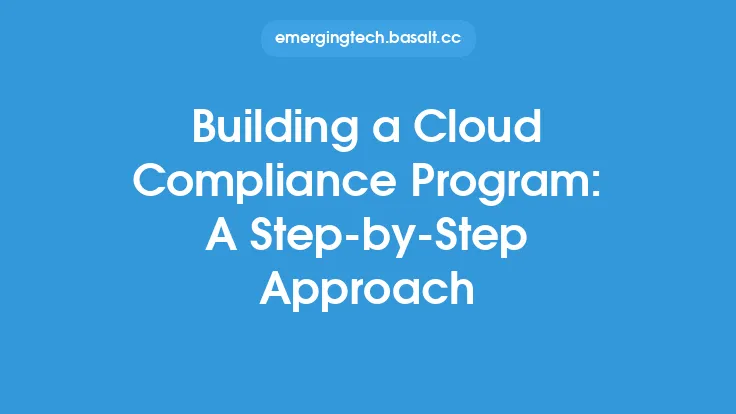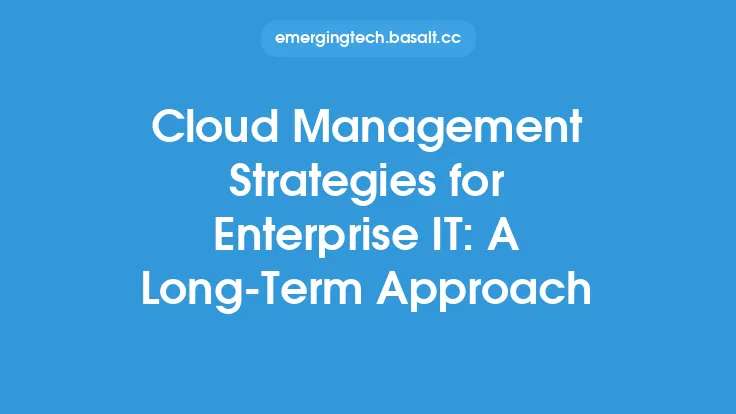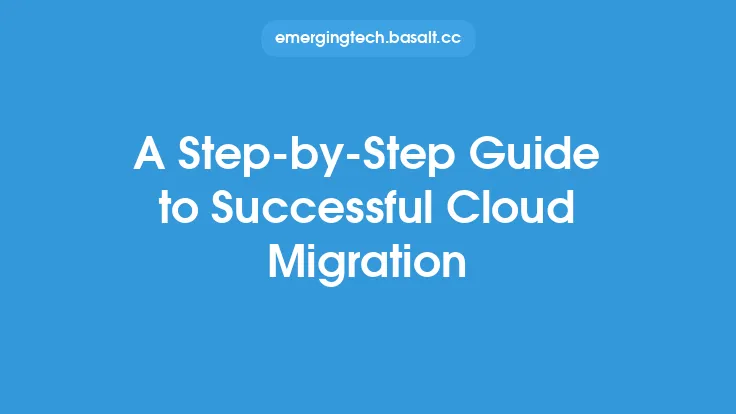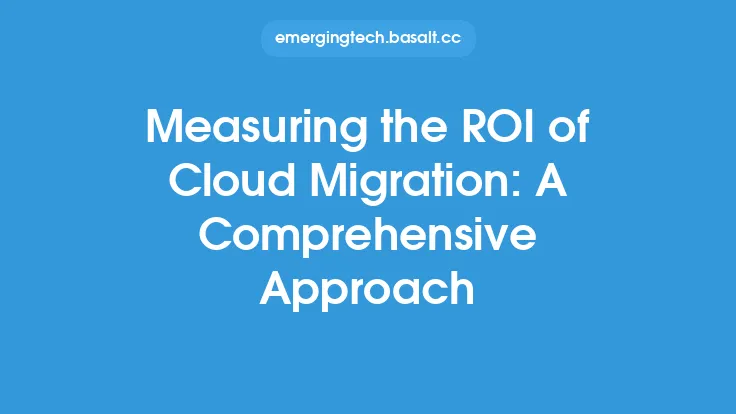As organizations continue to migrate their workloads to the cloud, managing cloud costs has become a critical aspect of their overall IT strategy. Cloud cost management is the process of monitoring, controlling, and optimizing cloud expenses to ensure that they align with business objectives. Effective cloud cost management requires a structured approach that involves understanding cloud cost drivers, identifying areas of waste, and implementing cost-saving strategies. In this article, we will provide a step-by-step approach to effective cloud cost management, covering the key concepts, best practices, and technical considerations.
Understanding Cloud Cost Drivers
Cloud cost drivers refer to the factors that influence cloud expenses. These drivers can be broadly categorized into compute, storage, database, networking, and security costs. Compute costs are associated with the use of virtual machines, containers, and serverless computing resources. Storage costs are related to the use of object storage, block storage, and file storage services. Database costs are incurred for the use of relational databases, NoSQL databases, and database-as-a-service offerings. Networking costs are associated with data transfer, bandwidth, and network usage. Security costs are related to the use of security services, such as identity and access management, encryption, and compliance.
To understand cloud cost drivers, organizations need to monitor their cloud usage and identify areas of high consumption. This can be done using cloud provider-native tools, such as AWS Cost Explorer, Azure Cost Estimator, and Google Cloud Cost Estimator. These tools provide detailed breakdowns of cloud costs, including usage patterns, cost allocation, and reservation recommendations.
Identifying Areas of Waste
Identifying areas of waste is critical to effective cloud cost management. Waste can occur in various forms, including unused resources, overprovisioned resources, and inefficient resource utilization. Unused resources, such as unused virtual machines, storage volumes, and database instances, can incur significant costs without providing any business value. Overprovisioned resources, such as oversized virtual machines and storage volumes, can lead to unnecessary costs and inefficient resource utilization.
To identify areas of waste, organizations can use cloud provider-native tools, such as AWS Trusted Advisor, Azure Advisor, and Google Cloud Recommendations. These tools provide recommendations for optimizing cloud resources, including rightsizing, terminating unused resources, and optimizing storage and database usage.
Implementing Cost-Saving Strategies
Implementing cost-saving strategies is critical to effective cloud cost management. These strategies can include rightsizing, reserved instances, spot instances, and autoscaling. Rightsizing involves optimizing cloud resources to match business requirements, eliminating overprovisioning and waste. Reserved instances involve committing to a specific amount of cloud usage over a one- or three-year period, providing significant discounts and cost savings. Spot instances involve using unused cloud capacity, providing significant cost savings and flexibility. Autoscaling involves automatically scaling cloud resources up or down to match changing business requirements, eliminating waste and optimizing resource utilization.
To implement cost-saving strategies, organizations can use cloud provider-native tools, such as AWS CloudFormation, Azure Resource Manager, and Google Cloud Deployment Manager. These tools provide templates and automation frameworks for deploying and managing cloud resources, including rightsizing, reserved instances, spot instances, and autoscaling.
Monitoring and Optimizing Cloud Costs
Monitoring and optimizing cloud costs is critical to effective cloud cost management. This involves tracking cloud usage and costs, identifying areas of waste, and implementing cost-saving strategies. Cloud provider-native tools, such as AWS Cost Explorer, Azure Cost Estimator, and Google Cloud Cost Estimator, provide detailed breakdowns of cloud costs, including usage patterns, cost allocation, and reservation recommendations.
To monitor and optimize cloud costs, organizations can also use third-party tools, such as Cloudability, ParkMyCloud, and Turbonomic. These tools provide advanced analytics and automation capabilities for optimizing cloud costs, including rightsizing, reserved instances, spot instances, and autoscaling.
Best Practices for Cloud Cost Management
Best practices for cloud cost management include monitoring and optimizing cloud costs, identifying areas of waste, and implementing cost-saving strategies. Organizations should also establish cloud cost governance frameworks, including policies, procedures, and standards for cloud usage and cost management. Cloud cost governance frameworks provide a structured approach to cloud cost management, ensuring that cloud expenses align with business objectives.
To establish cloud cost governance frameworks, organizations can use cloud provider-native tools, such as AWS CloudFormation, Azure Resource Manager, and Google Cloud Deployment Manager. These tools provide templates and automation frameworks for deploying and managing cloud resources, including rightsizing, reserved instances, spot instances, and autoscaling.
Technical Considerations
Technical considerations for cloud cost management include cloud provider selection, cloud architecture, and cloud security. Cloud provider selection involves choosing the right cloud provider for business requirements, including factors such as cost, performance, and security. Cloud architecture involves designing and deploying cloud resources, including virtual machines, storage volumes, and database instances. Cloud security involves protecting cloud resources from cyber threats, including identity and access management, encryption, and compliance.
To address technical considerations, organizations can use cloud provider-native tools, such as AWS Well-Architected Framework, Azure Architecture Center, and Google Cloud Architecture Center. These tools provide best practices and guidelines for designing and deploying cloud resources, including security, performance, and cost optimization.
Conclusion
Effective cloud cost management requires a structured approach that involves understanding cloud cost drivers, identifying areas of waste, and implementing cost-saving strategies. Organizations can use cloud provider-native tools and third-party tools to monitor and optimize cloud costs, including rightsizing, reserved instances, spot instances, and autoscaling. Best practices for cloud cost management include establishing cloud cost governance frameworks, monitoring and optimizing cloud costs, and addressing technical considerations such as cloud provider selection, cloud architecture, and cloud security. By following these best practices and using the right tools and technologies, organizations can optimize their cloud costs and achieve significant cost savings and business value.





